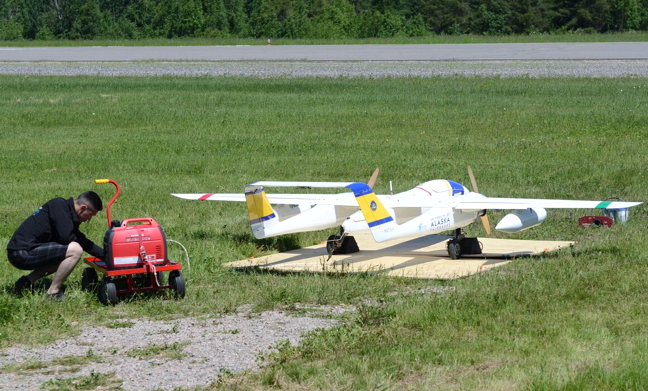How drones can support remote Arctic communities
OPINION: Drone technology has the potential to dramatically alter nearly every activity in the Arctic.

We are entering a new era of possibility in the Arctic.
Changing climate conditions are unlocking possibilities for economic development such as new shipping routes and oil and mineral exploration. Advanced technology is enabling these new Arctic possibilities through innovative monitoring and operating techniques, with drones among the notable technological disruptions to the status quo. They are being used in many applications — tracking wildlife populations, monitoring glacier ice melt, and containing oil spills and wildfires — that were very difficult and expensive due to the vast, isolated geography and harsh Arctic climate.
Today’s drone technology allows for operation in snow and freezing weather conditions, and makes many activities faster, safer, and less expensive than traditional approaches.
However, we are only at the forefront of unlocking the potential for drones in the Arctic.
The first way drones provide opportunity for people in remote Arctic communities is through increased access to products and services that is not possible through traditional ground or air transportation. Drones allow for faster and cheaper delivery of essential goods like medical supplies and food. Startup companies in developing countries are already experimenting with delivery of medical supplies to remote communities. With 4 million residents in the Arctic across eight nations, there is a sizable opportunity for drone delivery in the Arctic to improve quality of life by addressing issues like food security.
The second way drone technology can serve people in the Arctic is through transmitting real-time information that can be analyzed, and shared with communities or those in danger. Drones can share information faster than traditional channels. Many people die each year in the Arctic due to lack of information about new areas of thin ice, inclement weather, and other environmental dangers. Drones can help reduce these risks by providing new, timely information. Drones can also be used to assist search-and-rescue efforts by quickly scanning vast areas of land and sea and sending the imagery to rescuers. By reducing the time to locate people that are lost or trapped, drones can save lives.
Finally, drones provide an opportunity for high-quality jobs and economic development in northern communities. To enable and encourage applications of drone technology in the Arctic, new skills and talent are needed. There is an opportunity for indigenous communities to start companies and train local people as drone operators and as data analysts. As multinational companies increasingly seek to enter and operate in northern communities, indigenous communities can provide a valuable service by utilizing drone technology for delivery services, imaging and data analysis, or other pressing needs.
While many people have heard of drones, their first thought might be using them for product delivery in cities by Amazon or other retailers. It is important to think about the immense value that drones can provide in remote regions like the Arctic where millions of people live in communities that are difficult to access. Drones are a disruptive technology that can change the realm of what is possible in the Arctic. Governments and private sector companies interested in drone technology in the Arctic should work with indigenous communities to unlock these opportunities to improve access, information, and economic benefit.
Charlotte McEwen is a Master in Public Policy student at the Harvard Kennedy School. She has worked in the public, private, and social sectors and is interested in how cross-sector collaboration can address complex policy challenges. She is from Waterloo, Ontario.

The views expressed here are the writer’s and are not necessarily endorsed by Arctic Today, which welcomes a broad range of viewpoints. To submit a piece for consideration, email commentary (at) arctictoday.com.